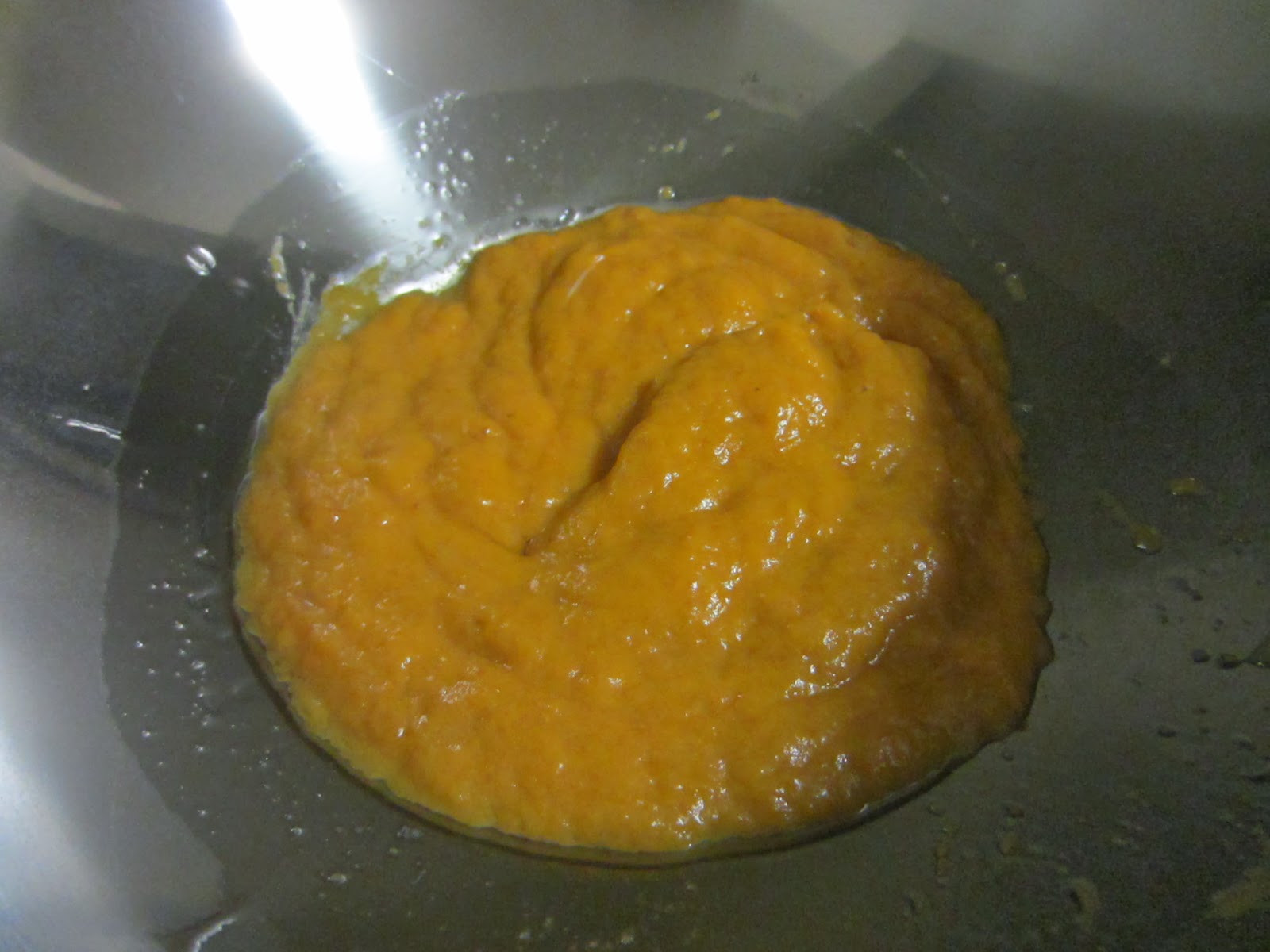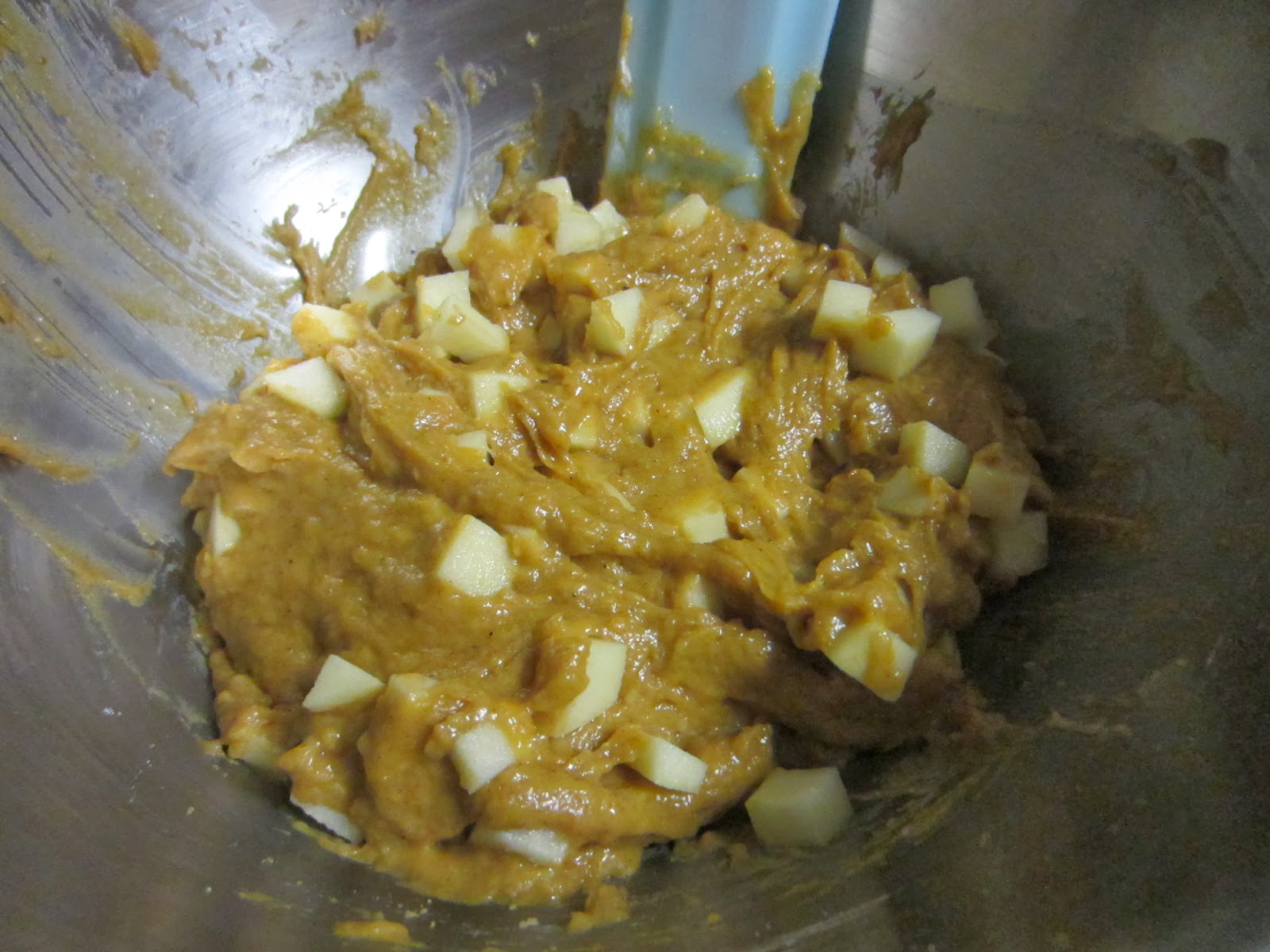
It's been pumpkin season for a while, but I'm only getting the chance now to post about a good pumpkin recipe I've tried towards the beginning of this month. I've found delicious looking pumpkin cupcake recipes that I want to try, but for this occasion I wanted to make something healthier that James and I could eat as an on-the-go breakfast--Pumpkin Apple Muffins. Apples were a great addition to these muffins that added a nice texture.
I slightly modified a Pumpkin Apple Muffin recipe I found through a Google search. Normally I have my go-to websites for recipes, but Cookies and Cups' muffins looked so good that I couldn't resist testing it out. As I mentioned before, I wanted a healthier muffin, so I had to forgo the cream cheese and streusel toppings. I think I prefer these indulgent toppings on cupcakes anyway.
The other differences in my recipe are the portioning, the sugar content, and the pumpkin pie spice mixture. I decided to halve the recipe and spread the batter out in 12 muffin cups. For the sugar, I thought the amount was more than I wanted for this muffin so I cut it down by 1/4 cup. I also replaced 1/4 cup of white sugar with dark brown sugar because brown sugar helps seal in moisture and draws moisture from the air over time to keep the muffin moist. This is helpful since you can so easily over mix muffin batter that doesn't use butter (non-cakey muffins). Lastly, I broke down the pumpkin pie spice mixture in a note below the recipe. I know that not everyone buys pumpkin pie spice, including myself, so I know how frustrating it is to see so many pumpkin recipes use it and always have to convert it.
Pumpkin Apple Muffins
Ingredients
1 1/4 cup flour
1/2 cup granulated white sugar
1/4 cup dark brown sugar
1/2 Tbsp pumpkin pie spice*
1/2 tsp baking soda
1/2 tsp salt
1 egg
1/2 cup pumpkin puree
1/4 cup vegetable oil
1 cup apple, peeled and chopped (1 small apple should work)
*You can break this down using a 8:4:2:1 ratio of ground cinnamon, ginger, nutmeg, and cloves. Most recipes often use a 4:2:2:1 ratio but in the end it's based on personal preference. For example, using the 4:2:2:1 ratio, a blend of 1/2 tsp cinnamon, 1/4 tsp ground ginger, 1/8 tsp nutmeg, and 1/8 tsp cloves makes 1 tsp of pumpkin pie spice. You can double this to make 2 tsp and take 1 1/2 tsp for this recipe. When I made this, I didn't have ground ginger, so I replaced it with an equal amount of cinnamon.
Directions
1. Preheat oven to 350°F.
2. Line your muffin pans with liners, or spray pans with cooking spray
3. Prepare muffin batter by whisking together flour, sugars, pumpkin pie spice, baking soda and salt.
4. In another bowl mix together eggs, pumpkin and oil.
5. Pour these wet ingredients in the dry ingredients bowl.
6. Mix until incorporated.
9. Take the muffins out of the pans and cool on a wire rack.










































